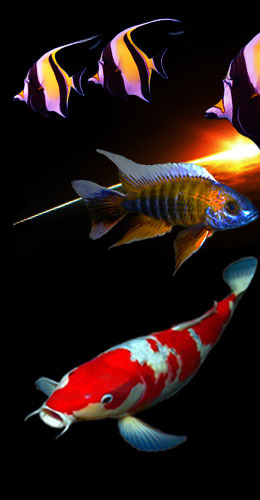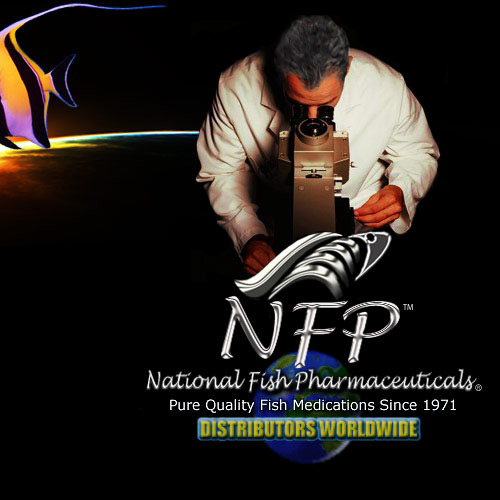|
ARGULUS - Fish Lice
Nice little creatures that resemble small crabs crawling all
over your fish. Fish lice are not insects, as their name
suggests, nor are they related to the louse that infest humans
or animals.
Argulus is a branchiuran crustacean, related more
closely to shrimp and crabs. Like other crustaceans, argulids
must molt or shed their shell periodically to grow and mature.
Argulus is a common parasite of ornamental fish,
particularly koi and goldfish. Approximately 100 species are
recognized, but most show little host specificity. The majority
occur in freshwater environments, although marine species exist.
Fish lice are usually only a problem in outdoor ponds rather
than aquariums, and are only brought into aquaria on wild or pond-raised fish. Argulids are
extremely irritating and infested fish rub on submerged objects
or bottom substrates in an attempt to dislodge the parasite from
their skin affected fish flash and jump, dive to the bottom of
a tank and roll onto their side. The fish will not eat,
and may hide and lose their color due to all of the stress
involved with a fish lice infestation.
The feeding activities
of argulids are highly damaging to fish. The fish louse
possesses a long stylet that pre-digests the fish tissue and
musculature into food for itself. Heavy infestations
typically result in gradual loss of physical condition and
weakening of the host to such an extent that it becomes
susceptible to secondary bacterial infections, especially where
the argulid injected the fish with it's stylet. Argulids are
also capable of transmitting certain viruses, bacteria, and
blood parasites as they feed.
The fish louse is visible
to the naked eye, and has a broad, flat,oval-shaped body, with a
shell and four pairs of swimming legs. They bear some
resemblance to a small brown crab. Argulids attach by a pair of
hooks and two large anterior suckers, but remain free-swimming
throughout their life. The parasite may periodically release
itself from one fish and swim to another, but cannot live for
extended periods off of a fish host.
The adult female
leaves the fish host to lay her eggs on submerged objects or
plants. Eggs hatch and must find a host within a few days or
they will die. After a series of molts the adult stage is
reached and the cycle begins again. The entire life cycle takes
40 to 100 days depending on the water temperature.
Outbreaks can occur from spring through fall at moderate to warm
water temperatures, but development is discontinued below 60
degrees Fahrenheit. So in winter, your fish are safe from
these parasites, but may awaken in springtime to something else.
Outdoor ponds can be quite a bit of work, and frustrating at
times. Do not forget that all of those birds drinking
water out of the pond...may be bringing bacteria and parasites
with them also.
Argulus Treatment
The best treatment we offer for this parasite is
De-Los.
It will take 1 month of treatments to kill the fish lice. We
treat with it once a week for 4 weeks. It will also get rid of
gill flukes and anything else you have crawling around in your pond
or aquarium. Do not use the product on catfish or plecostimus
of any species, any crabs, shrimp or crayfish.
Best regards,
Dr. Brian G. Aukes; PhD.
Chief Pathologist, National Fish
Pharmaceuticals
|
Fish Health Articles
.
|










